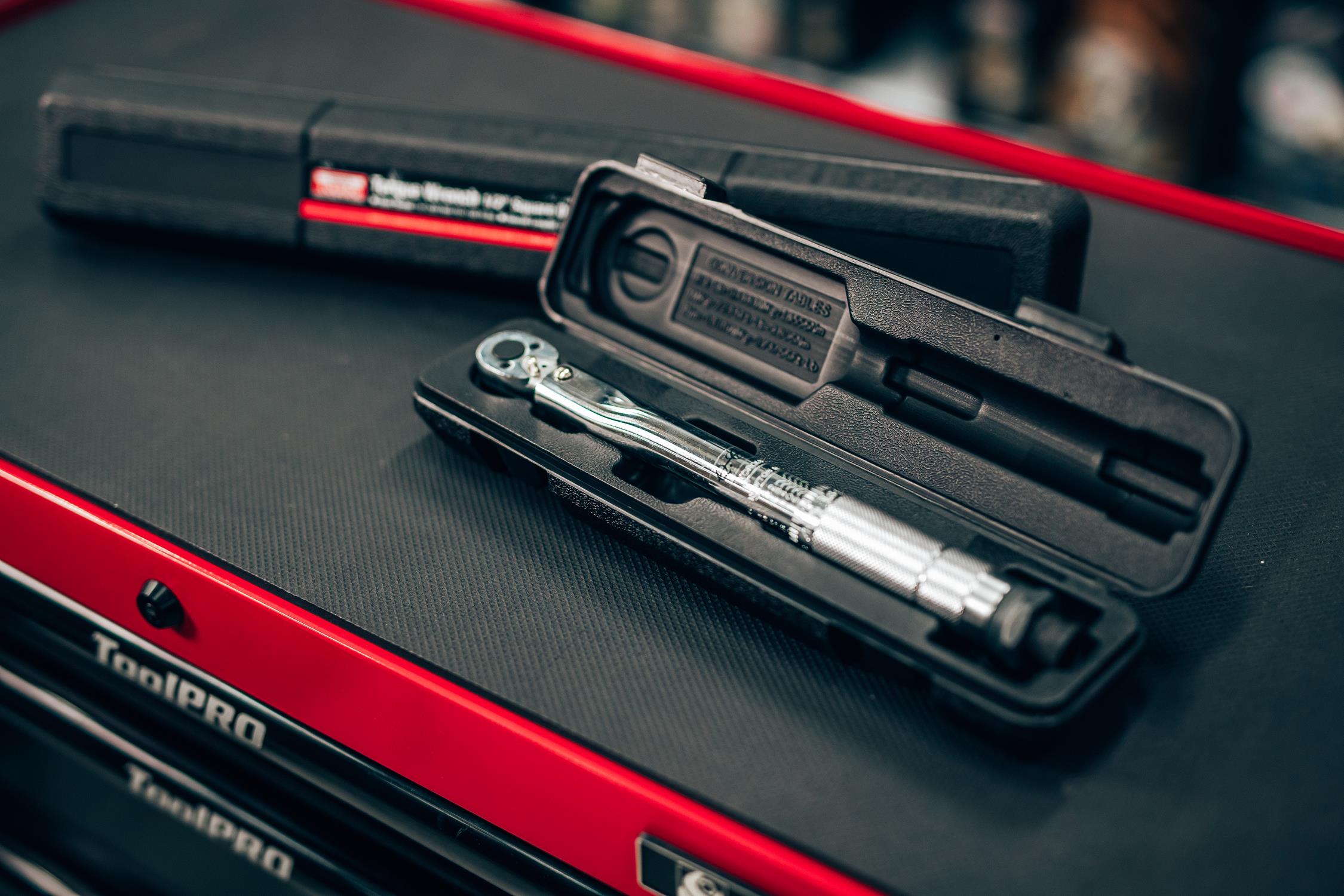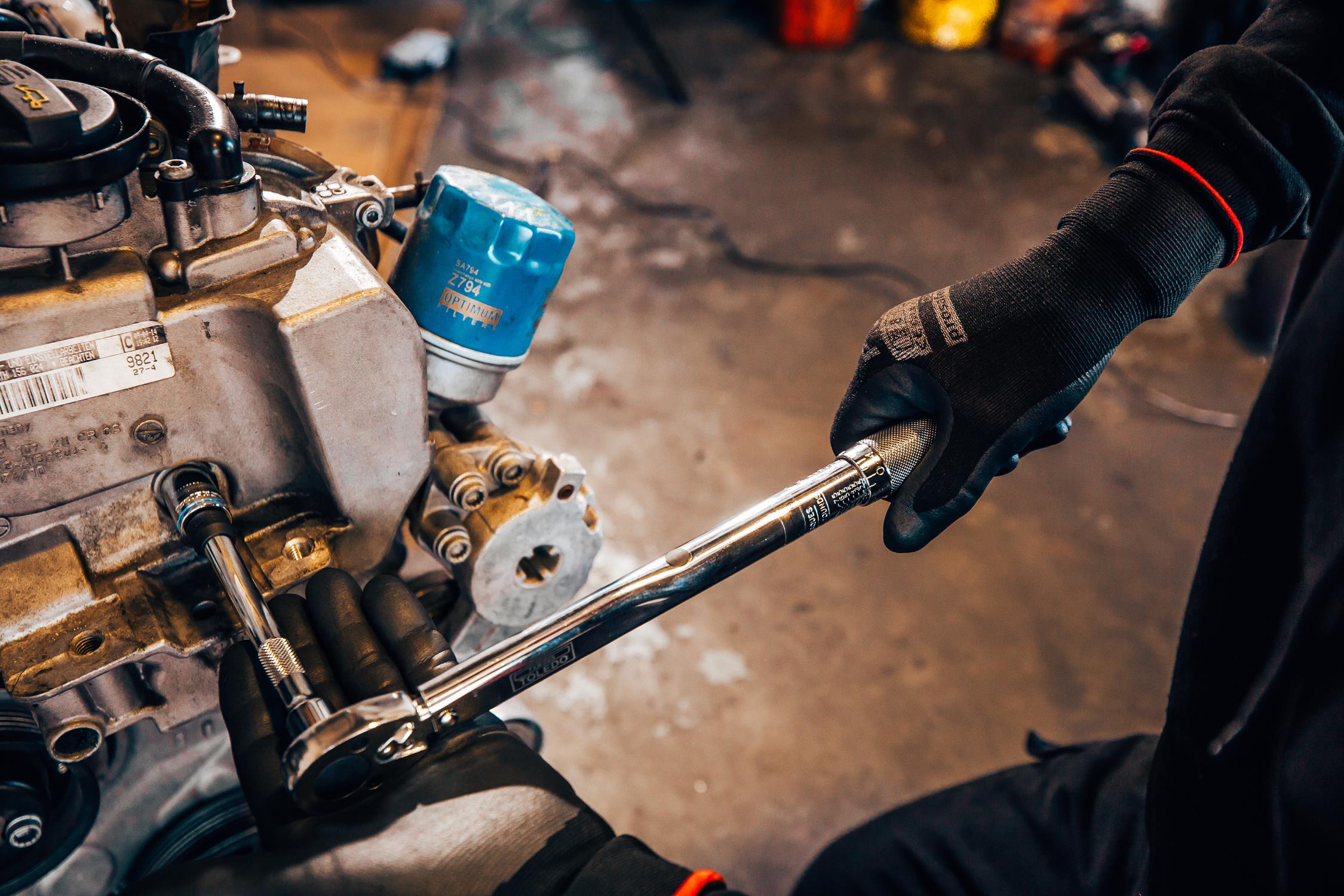What is a Torque Wrench?
Take your handyman skills to the next level by adding a torque wrench to your toolkit. Here’s everything you need to know.
What on earth is torque and how does it relate to your vehicle? The Supercheap Auto experts have all the answers.
Torque is the measurement of the amount of force used to move or turn something. It can be measured in either lb-ft (pound-foot), lb-in (pound-inch) or Nm (newton-metre). If you check a workshop manual for your vehicle, you’ll find torque numbers for every nut and bolt — from tailshaft to steering components and engine internals.

What is a torque wrench? How is it different from an ordinary wrench or ratchet?
A torque wrench is used to tighten nuts and bolts to a predetermined torque value, matching the recommended specs for the job. It allows fasteners to be tightened to the proper tension.
That’s important because?
Excessive tension can warp heads and gasket surfaces, placing too much pressure on delicate components causing them to wear quicker. You can stretch threads causing fasteners to come loose, or do a bolt up so tight it never comes off again.
Fair call, but there seems to be a few options?
A torque wrench is typically longer than a standard ratchet or breaker bar so it can give enough leverage to reach high torque when needed. There are many different types for a variety of applications — beam, click, hydraulic, micrometer, dial and digital torque wrenches, to name a few.

So, which wrench do we get?
They’re most accurate around the middle of their torque range, so choosing the right size for the job is the first thing. For accuracy, ensure the wrench is free and well-lubricated.
We’ve decided to go with the Toledo torque wrenches in 1⁄4”, 3⁄8” and 1⁄2” sizes. Good call. These heavy-duty Toledo torque wrenches are super-precise. They’re perfectly calibrated at the factory — and come with the certificate to prove it. You can be sure when the wrench clicks, it’s always hitting the right torque setting.

Once you’ve selected the most suitable torque wrench for your needs, we have a handy DIY article which shows you how to use a torque wrench.
Top Tip:
With wheel nuts, a common belief is the tighter the nuts the safer the vehicle. But over-tightening can be just as dangerous and can stretch them past their yield point and shear the stud.
Top features of Toledo Torque Wrenches:
- Wide range of torque settings
- Robust, slim design with reversible 24-tooth ratcheting head
- Durable click-stop design for accurate alert when you reach desired torque
- Lockable handle mechanism to stop unintentional changes to torque setting during use
- Torque-setting mechanism displayed in newton-metres and foot-pounds
Expert tip torque wrench tips, from top mechanic Kevin Hudson
Assuming you know your desired torque setting, twist the handle of the wrench until the edge lines up close to the value you want. Align the zero with the centre line and then turn the handle until you reach the single digit you require.
Now you’ve got the numbers set up, let’s tighten a fastener. You can use the ratcheting function in the wrench to tighten the fastener quickly, just like any other ratchet. However, your wrench should never be used to loosen tight fasteners. As the fastener becomes tight, apply steady, even pressure until the wrench clicks. You’ll hear and feel this click through the wrench. Then release and apply gentle pressure until the wrench clicks a few more times to ensure you’ve reached the correct tension. After use, return your wrench to a neutral torque setting to relieve tension on the internal spring.

*Important information* - Click here to read more about our DIY Advice Terms and Conditions.